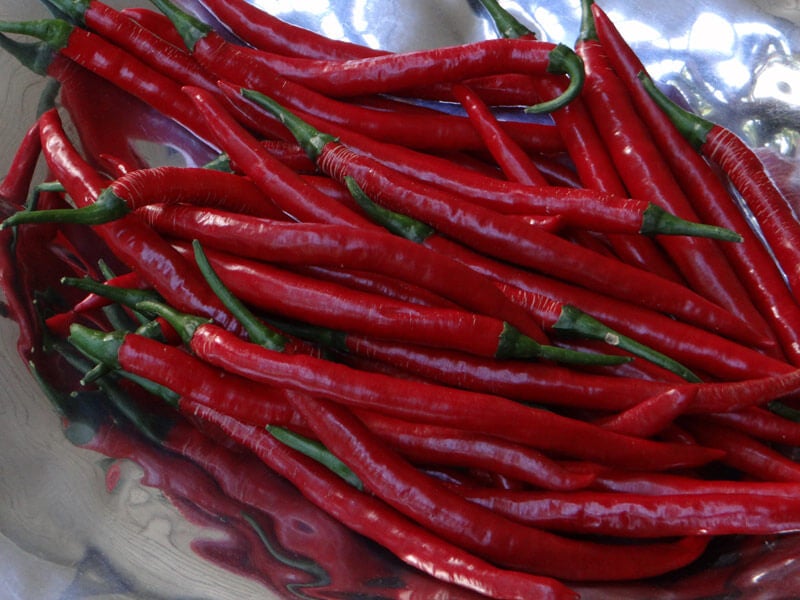Are you in the dark about how to preserve hot peppers you've harvested from your garden? Well, let me tell you a story about what happened to me this morning. Talk about being in the dark...
I woke up early and decided to make and can pepper jelly using the ingredients that had been sitting on the kitchen counter since last Saturday. (I had good intentions over the weekend, but it just never happened.)
I had a recipe for pepper jelly from GRIT, though I adjusted the list of peppers to fit what I'd grown (see below). I had my go-to preserving guide, The Beginner's Guide to Preserving at Home (Janet Chadwick, 2009, Storey Publishing). I had my water bath canner, 12 (4-ounce) Ball jelly jars, jar lifters, and all the other materials needed for canning. I was ready to go.
And then, the lights went out. Seriously. They do that from time to time, especially in rainy and windy weather, but this morning, no wind blew and no rain fell. I took it as a sign that my modern canning experience was just a little too swanky. Maybe I needed an extra challenge to know what it was really like (to some small degree) to do this back when it was a necessity?

So I canned pepper jelly in the dark. As the sun rose, the kitchen filled with enough light to guide my actions safely. And it was rather peaceful—just me and one stove eye burning with a hot blue flame. Thank goodness for a gas stove. (I promise, Mom, I was extra careful.) I finished prepping the jars, making the recipe, filling the jars (and wiping them clean), boiling them for the requisite 10 minutes, and carefully removing them to cool on a dishtowel.
And of course, not five minutes after I was done, the lights magically came back on and the house purred once again with the sound of electronics—computer, TV, clocks, air conditioner. What do they say about Murphy's law?
Anyway, it was a unique experience, not only because it was dark but also because, though I've canned several times before, this was my first attempt at jelly. From what I can tell, it turned out great. I had a little bite leftover and tasted it on a cracker. Taste test says: hot, but yum!
I especially love the orange color, so different from the bright-green pepper jellies I've seen before. The pretty orange hue came from my use of mostly red, orange, and yellow peppers. Eight pepper varieties in all made it into the jelly: Red Cayenne, Santa Fe Grande (mostly orange and yellow ones), Chili de Arbol, Sandia, Garden Salsa, and Mexibelle from our garden, and Green Bell and Orange Bell from the market.

Speaking of, let me tell you a little more about Red Cayenne. It is awesome. I planted only two of these plants but they have given me massive amounts of peppers all season, and they're still going strong. I wish I'd kept a count. Other than the 10 or so that I used in the pepper jelly, I've dehydrated most of the rest, a couple gallon-size bags full at least.
Here is a tip about dehydrating hot peppers, one I learned the hard way. Don't dehydrate them indoors. I did that with last summer's crop and ended up macing my husband and I out of our own home. Dehydrating hot peppers indoors fills the air with a stinging aroma that will literally bring you to tears. It's not that it smells bad, it's just that all that capsaicin—the stuff that makes peppers hot—goes airborne. So instead, I've started moving my dehydrator to the garage when hot peppers are on the racks.
After dehydrating the peppers, I ground them up in a food processor. The hot red pepper flakes will be great for soups and stews as well as on pasta and pizza.
Another tip, and then I'll be done talking about my own experience with preserving hot peppers. It takes a lot of water to fill a water bath canner, so don't just waste it by pouring it down the drain. Instead, use it water plants (after letting it cool, of course).
Now, what are your favorite ways to use hot peppers: fresh, dried, canned, or otherwise? We'd love to know!


By Kelly Smith Trimble




 Herbs
Herbs
 Vegetables
Vegetables
 Fruit
Fruit
 Flowers
Flowers
 Succulents
Succulents


